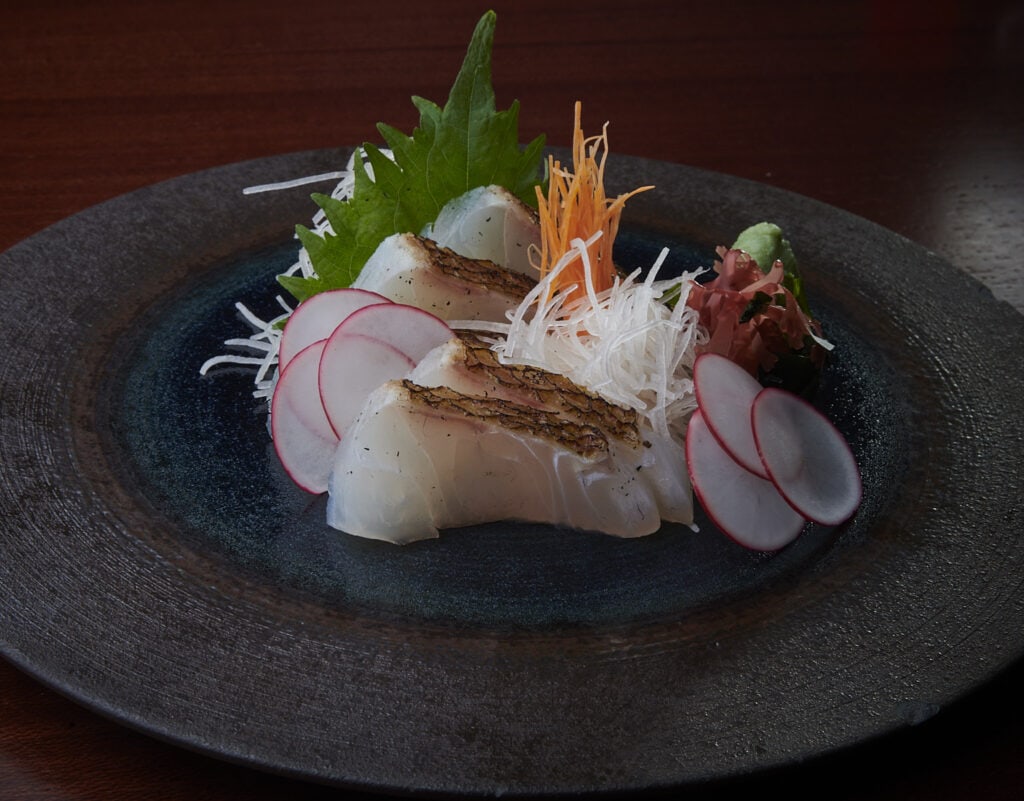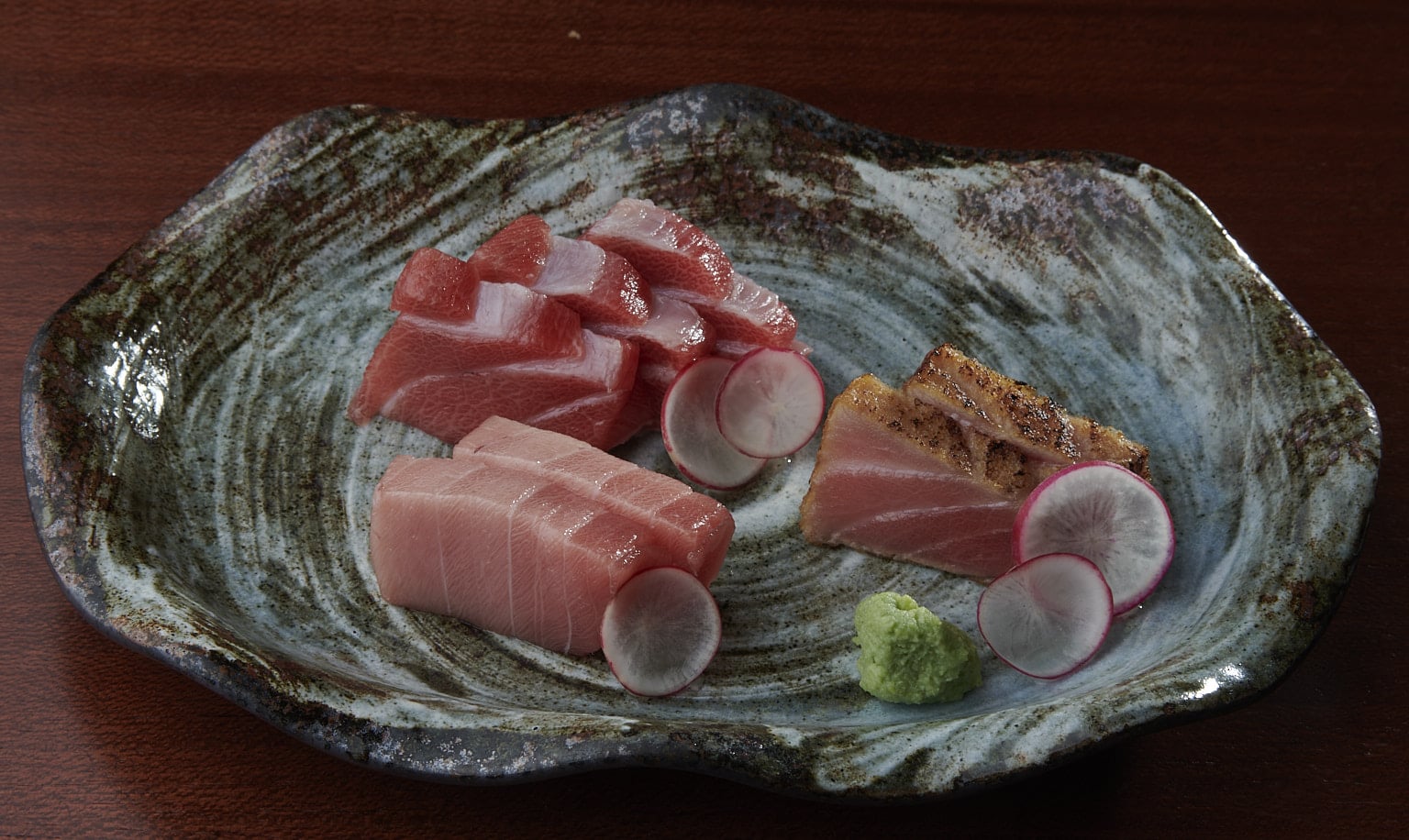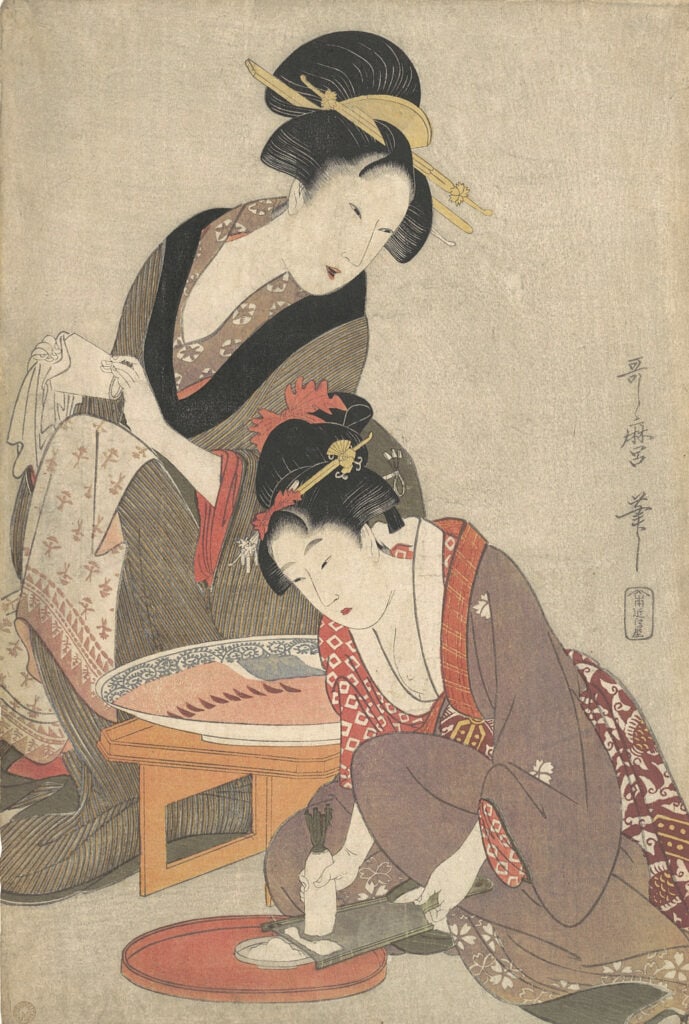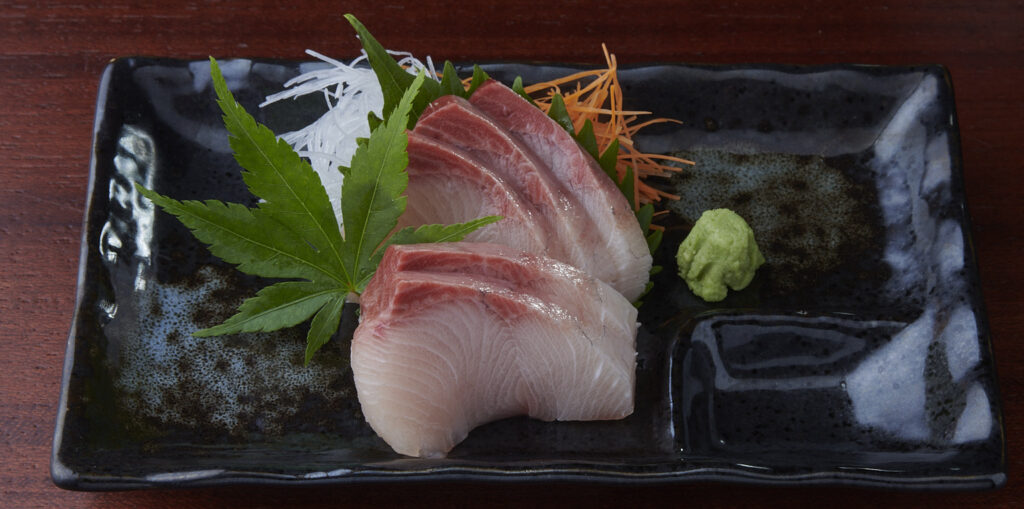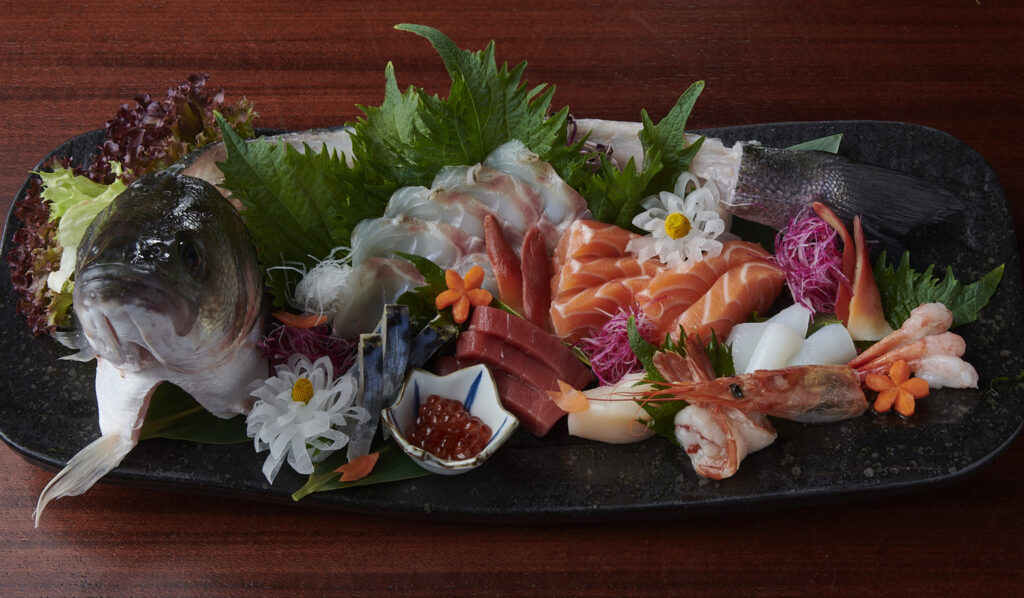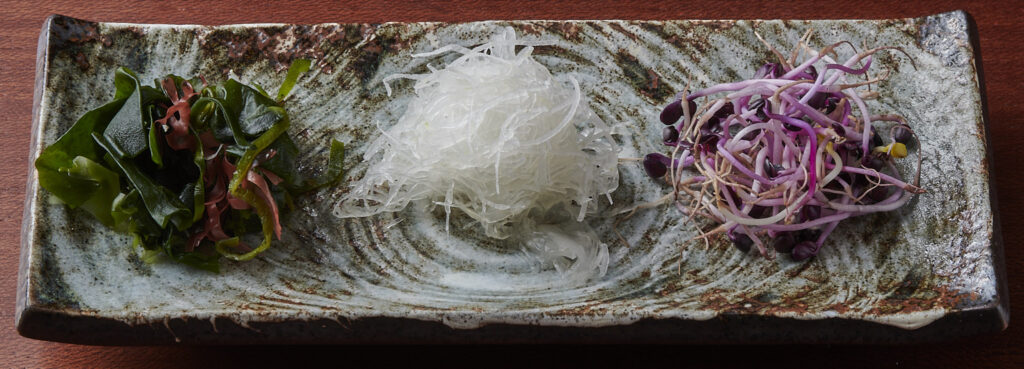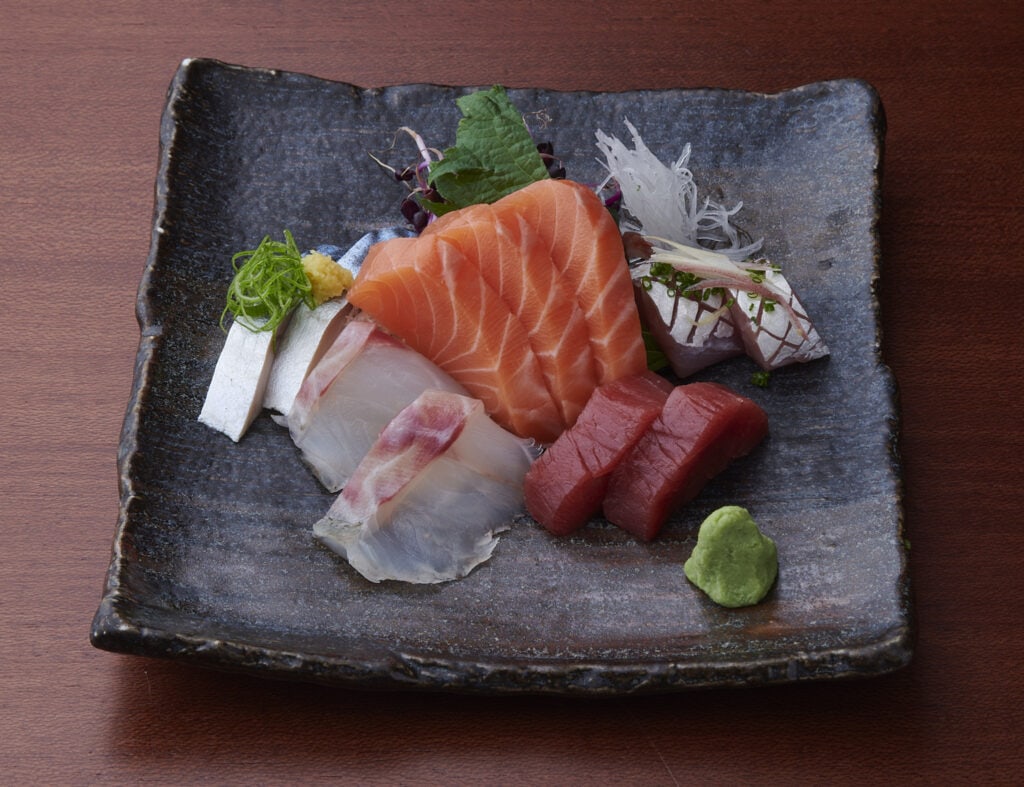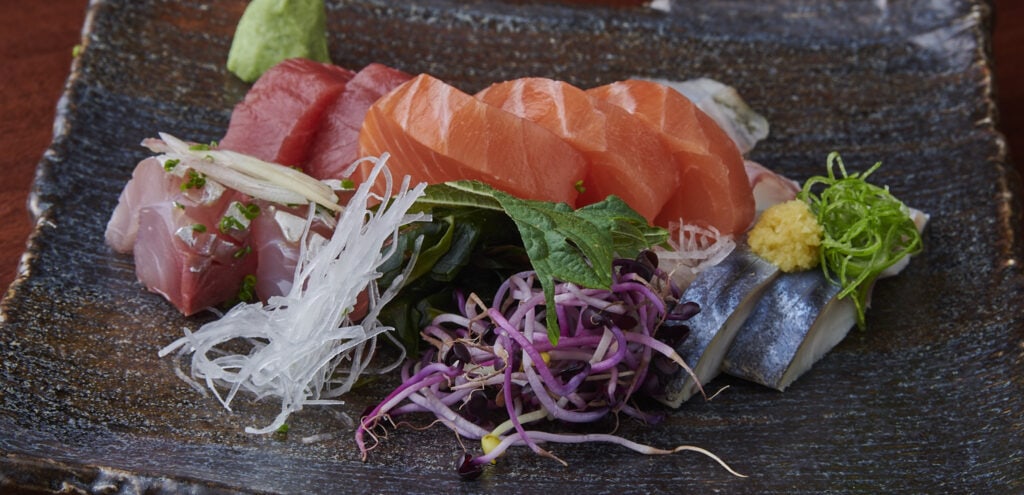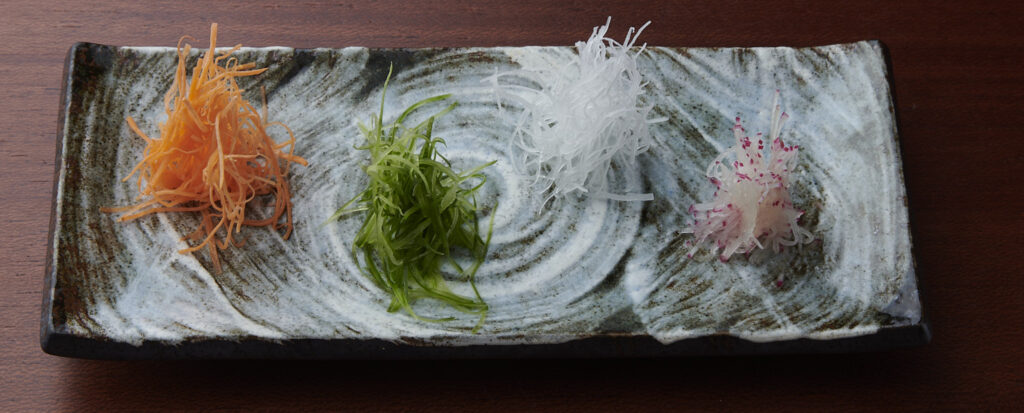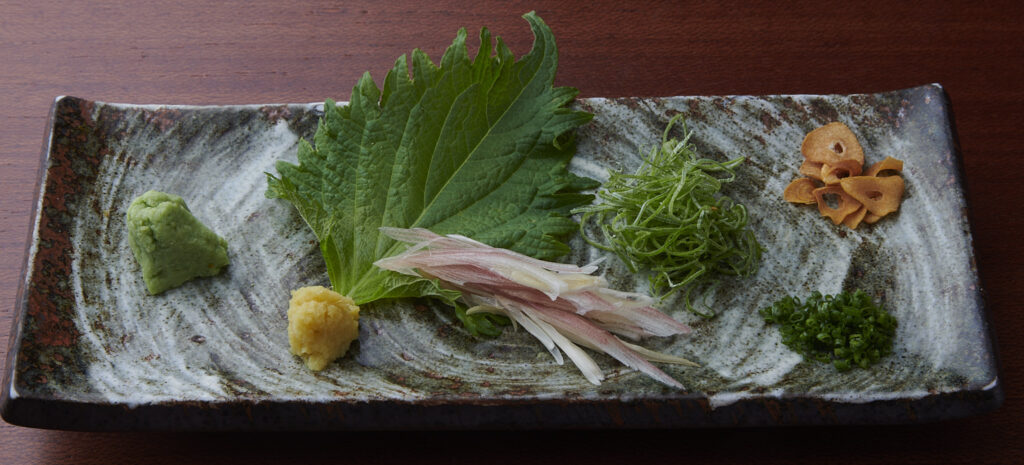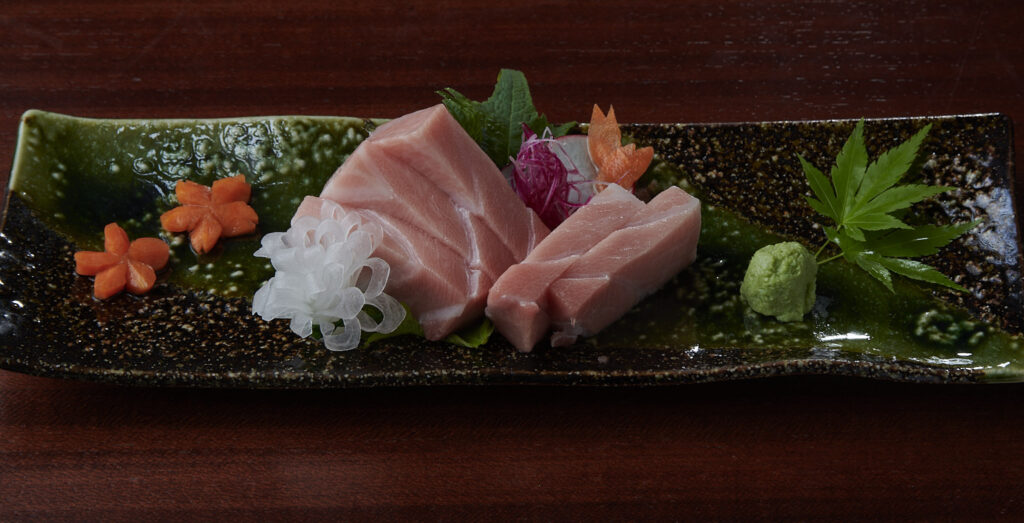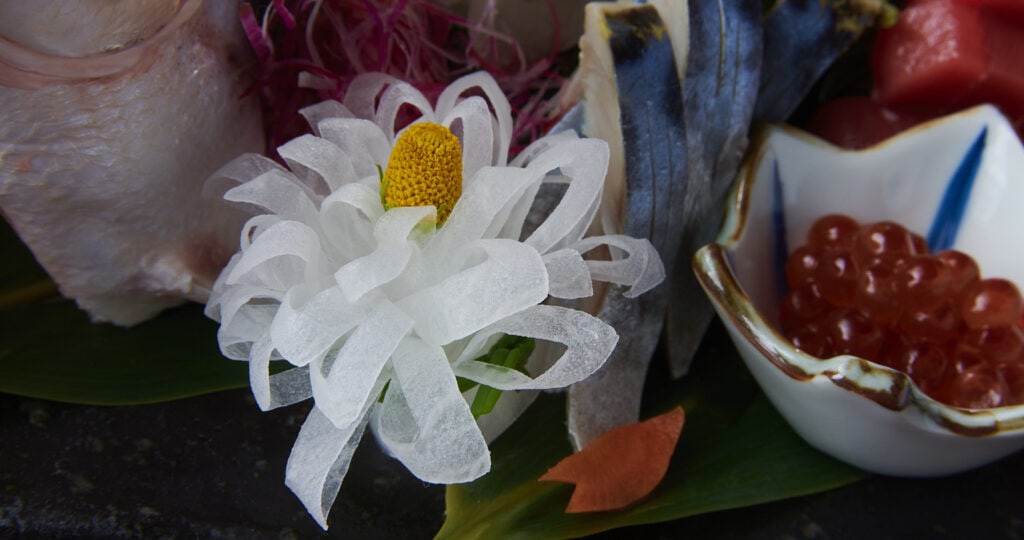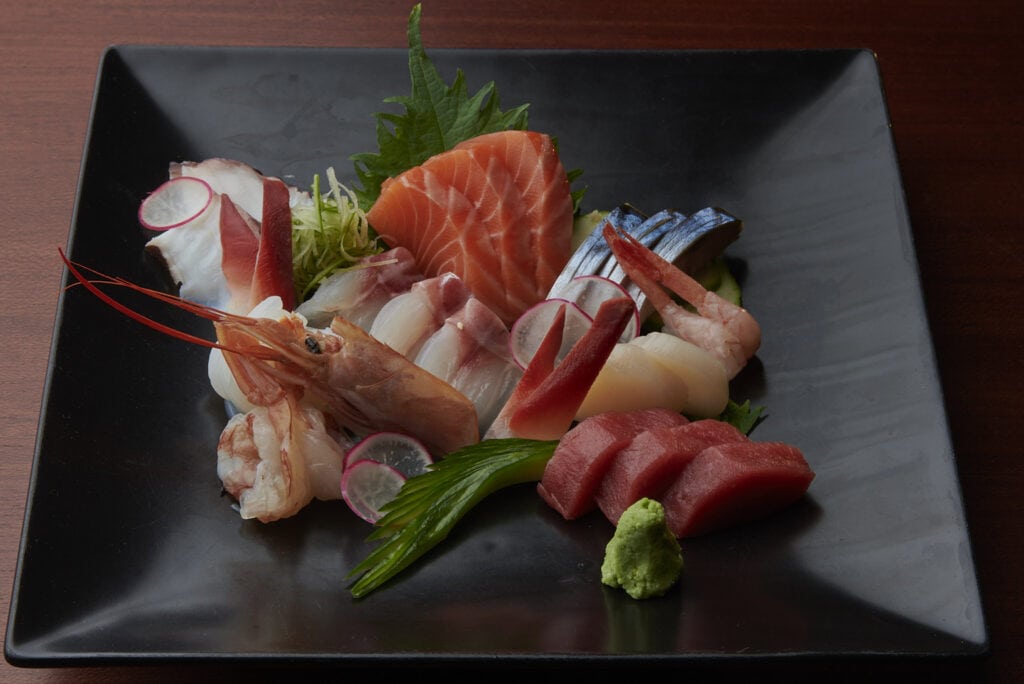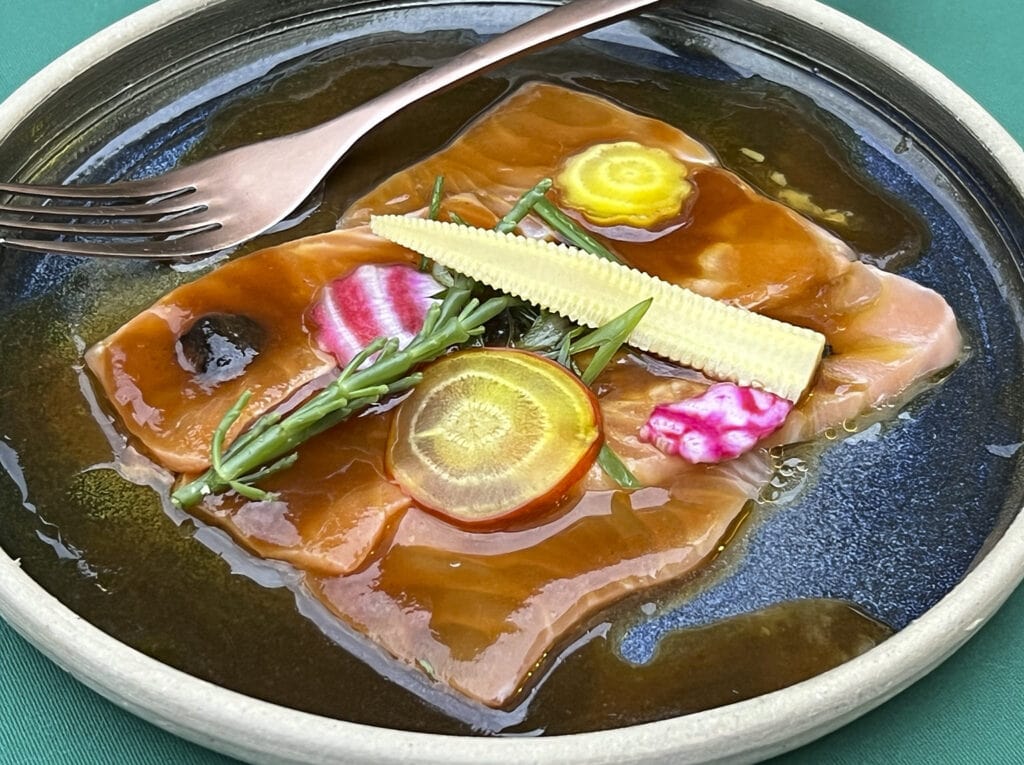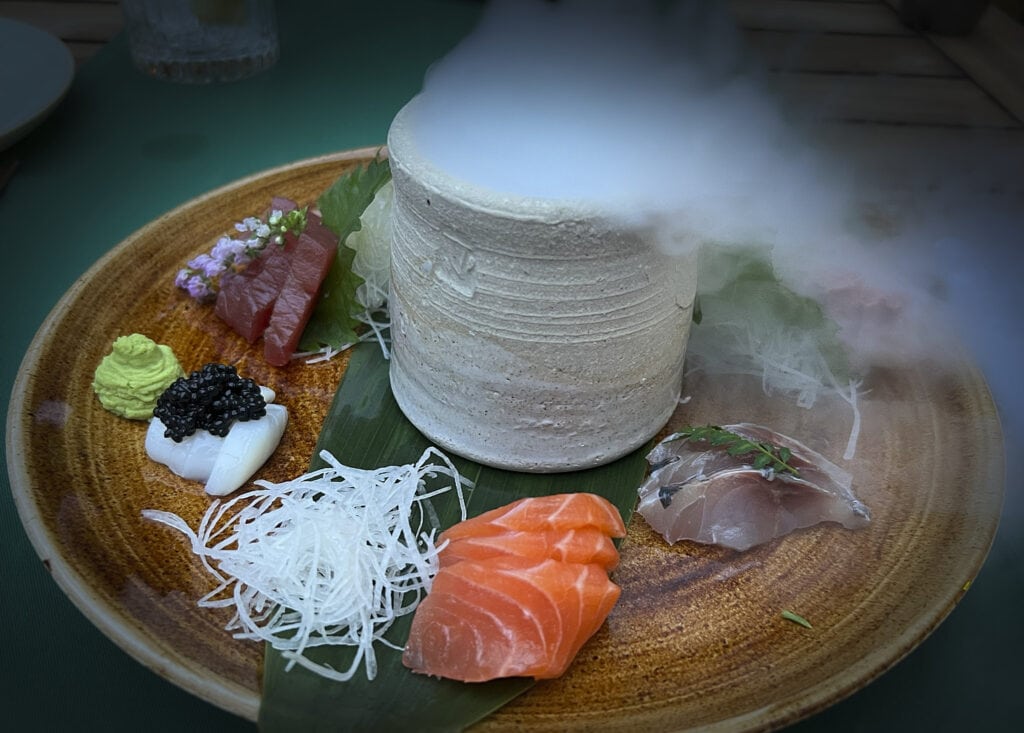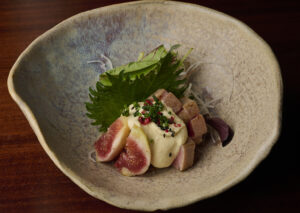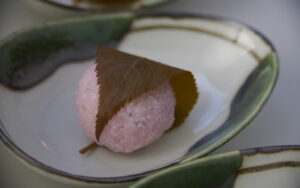Sushi & Sashimi are always mentioned in the same breath - sure, both come from Japan, are known for raw fish and are often and gladly served and eaten together.
For Japanese it is a little different: the word "Sushi", after all, derives from the meaning "leavened rice". from. And sashimi has nothing to do with that.
To call sashimi the "purest form of sushi," as some supposedly Japanese restaurants do, is thus first and foremost just pure nonsense. Even the description of a cooking site that sashimi is a "rather simple form of sushi" does not do justice to the typically Japanese complexity of the subject. Sashimi is not sushi, nor is it a subsection of sushi. For Japanese, sushi and sashimi are two completely different dishes - comparable to the difference between pizza and pasta for Italians.
Sashimi comes for it also in many places of the Japanese cuisine before, where sushi does not necessarily or only rarely appear, such as the Haute cuisine Kaiseki.
So sashimi is not a subset of sushi, but in itself is an exciting, broad field of interesting details and preparation techniques from Japanese cuisine.
And especially from a sashimi Moriawase you can definitely tell whether the cooks in a "sushi restaurant" know something about Japanese cuisine and loving preparation, or not.
Here you will find everything you need to know about "Sashimi - raw fish from Japan":
What is sashimi?
Sashimi are raw fillets, usually of fish or seafood, cut into various shapes and thicknesses and finished with Soy sauce, wasabi and decorative small garnishes to be eaten together.
For good sashimi, especially high-quality, fresh fish is essential as well as craftsmanship and experience of the chef.
Sashimi is not an appetizer, but simply a form of food that can be integrated into a menu as a starter, intermediate course or main course. In Japanese cuisine, a sequence of courses is not as important as it is in the West, and there are many different types and sequences of courses in many different cuisines.
Sashimi is prepared by removing skin and scales from a fish, removing bones and bones, and then expertly cutting it into appropriate pieces that can basically be eaten without further boiling or frying.
Where does sashimi come from?
Sashimi is an important and typical component of Japanese cuisine.
Today, sashimi often appears in connection with sushi, but sashimi actually has its place in other areas of Japanese cuisine that have nothing to do with sushi.
Originally sashimi was "Nama-su", fish cut into small pieces., which was refined with a vinegar dressing and so in the Muromachi period (1336-1573) was served as "Kirimi" (切り身).
Former name "Nama-su", then "Kirimi"
Later, these fish pieces were dipped in a seasoning mixture called "Iri-Zake" (煎り酒). Iri-Zake is made from boiled down sake to which "Umeboshi" (soured plums), Katsuo-bushi (dried bonito flakes), Kombu (seaweed), roasted rice and additionally wasabi vinegar and ginger vinegar were added.
Around 1530 one began, Soy sauce in Yuasa (now Yuasa-cho, Wakayama Prefecture). Later, this production spread to the neighboring Kansai region and reached the Edo area (present-day Tōkyō) after 1600. Also in Choshi and Noda in Chiba Prefecture was made Soy sauce already made at that time.
When it gradually became common to use soy sauce at home, the custom of eating kirimi with wasabi and soy sauce arose.
How did Kirimi become Sashimi?
There are several theories as to why the name changed from "Kirimi" to today's "Sashimi".
"Sashi" means to spear something and "Mi" means meat. It is believed that in the past, after the fish was filleted, the head and tail were stuck into the fish meat so that the particular type of fish could be identified.
It is also said that "kiru" (cut off) was considered a negative word in the samurai-influenced society of the time and therefore meant bad luck. Therefore, they preferred to use the word "sasu" (impaled).
The name "Kirimi" thus changed to "Sashimi" and spread from the Kanto area throughout the country.
Why is sashimi also called "otsukuri" in the Kansai region?
Sashimi historically spread gradually from the Kanto region (present-day Tōkyō and east of it) to the Kansai region (present-day Kyōto, Ōsaka and west of it).
At that time, in Kansai, the region dominated by the imperial city of Kyōto, the word "Sashi" (staff, spit) was considered a bad, unpleasant word. Therefore, a new name was created.
In the Kansai area, "tsukuru" means to cut a fish and so sashimi was called "tsukurimimi". In the meantime, the word was preceded by the honorific prefix "o" and the name was shortened to "Otsukuri".
Development towards today's sashimi
In the late Edo period, market stalls called sashimi-ya (-ya is Japanese for "store, store") appeared, selling sashimi.
Customers began to bring their own bowls and have them filled with pieces of their favorite fish. This changed the tradition of enjoying only one type of fish in a dish. The new sashimi style of mixing a variation of types of fish in one dish was born.
As the presentation of sashimi changed, different ingredients began to be added to the pieces of fish: Ken (剣, usually finely chopped white radish or cucumber), tsuma (妻 shiso, etc.), yakumi (薬味, wasabi, ginger, etc.), ashirai (あしらい) became additions and decorations served with sashimi.
However, the task of these ingredients is not only to attractively decorate the dish in which the sashimi is served, but also to enhance the taste of the fish. In addition, these ingredients eliminate the smell of fish, have a sterilizing and digestive effect.
What do you make sashimi from?
Classically, sashimi is made from Fish & Seafood made
Of course, depending on the consistency, you can make sashimi out of all sorts of fish, seafood, shellfish and mollusks that are suitable for nigirizushi.
Sashimi mainly made from fish & seafood
In Japan, an island kingdom that has always been closed off from the outside world for a long time, people are much more accustomed than in the rest of the world to eating all kinds of seafood, enjoying it, utilizing it - equal to whether vegetarian or of animal origin, marine plant or marine animal.
In Germany, the selection of suitable fish varieties of the right quality is usually significantly limited.
There are often Sashimi from individual fish (Sashimi itten-mori, 刺身一点盛り) such as maguro sashimi (tuna), shake sashimi (salmon) and so on.
But the high art lies in the Sashimi MoriawaseThe mixed arrangement, where different fishes are arranged and arranged differently according to their suitability.
In Germany, salmon, tuna, mackerel, scallop, butterfly scallop, yellowtail and other fish, shellfish and seafood are typically used for a Sashimi Moriawase depending on the season, restaurant and chef's qualifications.
More options for sashimi
Just for the sake of completeness, it should be mentioned that sashimi does not necessarily have to be based on fish or seafood.
Other examples of sashimi are
- Meat (horse, whale, beef, chicken, etc. - can be eaten raw or cooked, always assuming appropriate quality and freshness, of course).
- Konnyaku (gelatinous mass from konnyak root)
- Yuba (soybean curd or tofu skin)
- Kamaboko (Fishpaste)
- Vegetables (Also eaten as sashimi - for example, fresh daikon, avocados and bamboo shoots are called sashimi when served with wasabi and soy sauce).
Basashi - Sashimi made from horse
In Kumamoto, for example, horse sashimi is also considered a delicacy - there with a relatively sweet, locally produced soy sauce.
Chicken Sashimi: Torisashi & Toriwasa
Torisashi (鶏刺し) is also known as chicken sashimi in Japan.
The custom of eating chicken raw has uniquely evolved from Kagoshima Prefecture and in parts of Miyazaki Prefecture.
In these two prefectures there are special hygiene standards for chickens, and even in supermarkets you can buy torisashi.
In these areas, chicken thighs, chicken breast, white meat and liver are often served on one plate, and every flavor and texture is enjoyed. (Source: https://www.maff.go.jp)
Another variation of chicken sashimi is toriwasa (とりわさ). The chicken meat is blanched briefly in boiling water, cooled in ice water and then cut into sashimi-shaped pieces. The outside of the meat is cooked and white, while the inside is pink.
This dish is called toriwasa and is eaten with wasabi and soy sauce. Toriwasa can also be found in yakitori restaurants or izakaya in Tokyo.
How to eat sashimi?
There are certainly many different conceivable rules or suggestions on how best to enjoy sashimi. But one thing is certainly always valid:
Good sashimi is a precious food and should be enjoyed with a certain respect and thoughtfulness, to respect (as always, really) the living creature, to enjoy the craftsmanship of the chef, and to appreciate the Japanese knowledge of its preparation.
Good sashimi is much more than just fresh, raw fish that has simply been cut into small pieces!
Here are a few notes from our perspective.
The best order for sashimi
First, you can think about the order in which the sashimi should be eaten.
For example, sashimi from one type of fish is eaten from left to right.
The pieces are arranged so that the one on the extreme left is also in front, so that it can be picked up easily. This order is of course based on the assumption that the eater is right-handed.
For a sashimi that consists of several different types of fish or seafood (for example, a typical sashimi Moriawase), the first order is according to taste orientation. Here you eat from "light to fatty" or from "white fish to red"..
This is a good way to enjoy the delicate flavor variations of each fish. The same approach is used for squid or shellfish: eat from light to rich in fat.
How to use wasabi and soy sauce for sashimi?
You often see in Germany that wasabi is dissolved in the soy sauce and then the sashimi is seasoned with it (and we did it that way ourselves for a long time).
But this is actually not optimal - wasabi should not be dissolved directly in the soy sauce for sashimi. This is because each fish tolerates a different amount of wasabi to evoke the optimal taste experience.
Ideally, you take with the chopsticks a small amount of wasabiwhich you on top of the fish fillet Place
Then dip the Briefly dip the underside of the fillet in the soy sauce. The wasabi should not mix with the soy sauce in this way.
This allows you to better taste the individual flavor elements, especially since the amount of wasabi also depends on the type of fish:
more wasabi for fattier varieties such as salmon and toro, less for lower-fat fish such as white fish, dorado, tai.
Of course, you can also wrap wasabi in the sashimi fillet and dip the outside of the sashimi in soy sauce.
As with sushi, of course, should sashimi not bathed in soy sauce be
Is it okay to eat sashimi during pregnancy?
For bacteriological reasons, it is recommended that the Consumption of raw fish during pregnancy discouraged.
At the same time, countless problem-free cases are known from Japan. For all we know, it is also a question of habituation, whether the mother has always eaten raw fish. If in doubt, play it safe. And above all: always consult your doctor for such issues and not frivolously the internet 😉
At what age can you eat sashimi?
As a general rule, only fully heated meat or fish should be given to young children. From the age of 2-3 years, it is conceivable that children try raw fish.
Of course, this is also culturally different: in Japan, raw fish is a frequent part of the very normal diet. On the other hand, in Germany there may be no need to introduce a child to sushi & sashimi at the age of 3.

What side dishes are available with sashimi?
In the balanced, classic japanese cuisine usually sashimi is simply a component of different courses. Something raw, something cooked and so on.
Sashimi is generally served without a side dish, but can be supplemented at any time with a miso soup and a bowl of rice.
However, in a multi-course meal, rice and soup may appear elsewhere, in a different course.
Directly related to the sashimi, that is, on the same plate, are usually only tsuma and yakumi, various discreet decorative or flavorful elements from the sea or the garden.
Pickled ginger served with sushi does not belong to sashimi! The ginger is considered too intense, finely chopped radish is used instead.
Wenn also zu einem normalen Sashimi Ingwer gereicht wird, bitte denken Sie sich Ihren Teil und schauen Sie auf unsere verschiedenen Artikel, zum Beispiel wie man gute japanische Restaurants erkennen kann.
Tsuma as a generic term for typical side dishes to sashimi
Basically, ashirai is a term used to describe decorative elements such as vegetables or flowers in Japanese cuisine, although in sashimi these are referred to as tsuma (妻/褄). Tsuma serves as a generic term that is universally used,
Typical examples are vegetables such as daikon radish and cucumbers, Shiso leaves, shiso sprouts, parsley and red buds, seaweed such as wakame, and seasonal flowers such as kiku (chrysanthemum flowers).
These tsuma are mainly used to skillfully and attractively stage and arrange sashimi. Through a bed of wasabi shoots, a fish can be attractively erected on the plate, so that not all fillets simply lie flat on the plate.
All tsuma also serve to embellish the overall impression of the sashimi through the coloring. So you can always be critical if a sashimi is actually only served on lollo rosso lettuce leaves and thick strips of radish (more than 3mm) are lying around somewhere: a really nice sashimi Moriawase is a small work of art with its garnishes.
The generic term tsuma can be used universally, for example, the radish in sashimi is also called daikon tsuma. However, tsuma can be further differentiated into ken in and yakumi:
Ken (剣) finely cut into strips vegetables.
Ken (剣) is written with the characters of "sword" and means as much as sharp, long, narrow etc.. It refers to the tsuma finely cut into strips in sashimi, for example daikon (radish), carrots, cucumber and myoga.
Often, these ken have also traditionally been known for their disinfection and therefore should be eaten with pleasure.
By the way, especially sliced radish also indicates the quality of a Japanese restaurant: is it very finely cut by hand or is it rather coarse radish strips from the machine?
The same daikon slices are also called "shikizuma" (A type of tsuma) when under the sashimi, and "ken" when served in a thin, pointed shape and standing up. Confusing - typically Japanese barely penetrable. The radish also contains an enzyme called diastase, which is said to soothe the stomach and prevent heartburn.
Japanese cooks can also carve wonderful garnishes and decorations from cucumbers. All these garnishes are edible, but not necessarily intended to directly change the taste - but first to prepare the typical Japanese pleasure of food for the eyes.
Yakumi are garnishes to sashimi that change the taste
On the other hand, there are also yakumi (薬味) as a garnish for sashimi: these are seasoning garnishes intended to subtly enhance the flavor of certain sashimi. Sometimes these yakumi are also used simply to neutralize a certain natural fish odor.
Typical yakumi;
Vegetables: leeks, ginger, radish, Shiso, Wasabi, Myoga, Mitsuba
Citrus: lemons, Yuzu (柚子), sudachi, limes, kabosu
Spices: Chili, mountain pepper (Sansho 山椒), pepper, cinnamon
Seaweed, seeds, etc. can also be used here. Likewise garlic (e.g. as garlic chips for katsuo sashimi).
In summary, the exact classification of tsuma, the division into ken and yakumi, is not straightforward.
What remains is that a good sashimi with the expertly selected garnishes can please your eyes and your palate.
Look for quality to experience that subtle joy that Japanese cuisine can create!
How to make good sashimi?
Of course, you can just cut down a few pieces of a fish fillet.
Behind real sashimi from a really good Japanese restaurant, however, is a lot more work and expertise than one might first imagine.
A good sashimi Moriawase makes a versatile, finely sliced selection of different raw fish, which - typical japanese cuisine - through their diversity and their Arrangement pleases first the eye and then the palate.
Be able to select suitable fish and assess their freshness
First of all, it is important that the chef is well versed in how fresh the ingredients are and when exactly is the right time to consume them. Of course, freshness is essential for sashimi, but in individual cases, such as tuna, the ingredients are filleted and then purposefully exposed to the air so that they mature.
Detailed knowledge of which fish is suitable for sashimi is, of course, indispensable basic requirement.
And that the restaurant has relationships with appropriate suppliers and is quality oriented, is the next big issue in itself...
Fillet and prepare fish according to their species
Second, you need knowledge and experience in the proper preparation of fish and seafood. For example, salt is spread over some fish and mixed with Cooking sake washed down. Another method of preparation is to marinate the fish with seaweed, which brings out the subtlety of flavor of the fish. So, depending on the type of fish, more or less extensive preparations, always different, are necessary to bring out the best flavor.
Mastering the cutting technique depending on the type of fish
The way in which the fish is cut also has an influence on the taste of the sashimi - for this, of course, a suitable, sharp Japanese knife is required and the knowledge of how to handle it.
Above all, however, it requires extensive knowledge and craftsmanship, which ultimately constitutes the art of a very good chef for Japanese cuisine. The question of which fish are cut and how, how large, thick, thin or chiseled the individual fillets are arranged for the guest depending on their type and characteristics, is what separates the wheat from the chaff, the top class from the simple class, even in Japanese restaurants.
Here are some typical ways the fish is cut for sashimi:
Hira-zukuri 平造り
This type of cutting can be used on all types of fish, from red to white. First, you position the knife with the bottom to the right of the piece of fish and then cut it in one motion, pulling it towards you. This way of cutting is more suitable for preserving the natural structure of the fish flesh than moving the knife back and forth while cutting.
Sogi-zukuri そぎ造り
This method is used for white fish and squid: the knife is placed flat on the cutting board and the fish is cut thinly and diagonally. For white fish, the secret here is to cut along the fibers so that the fish retains its elasticity.
Hoso-zukuri細造り
This method suits thin-fleshed fish such as horse mackerel (bastard mackerel, also called wood mackerel), garfish and silaginoid fish (small white fish). The skin side is placed upward and a thin cut is made with the knife by straightening the knife from the right side. Also called ito-zukuri糸造り.
Nami-zukuri波造り
For example, for octopus, cut the surface by moving the knife up and down 2 to 3 mm to allow soy sauce and other seasonings to penetrate deeply.
Kaku-zukuri角造り
The filleting method is mostly used for tender fish to cut it into bite-sized pieces.
Independently of this, by the way, you will find in our blog a small introduction to japanese cutting techniques.
Arrange sashimi appropriately and attractively
At times, tsuma, yakumi and ken are also simply an elegant way to arrange the sashimi on the plate already: The main and supporting actors are arranged on the plate in an appealing and varied way, and herbs and garnishes are used for this purpose, which you can definitely eat, but don't have to. These supports also serve to ensure that any moisture that may escape from the fish does not result in an unsightly little pool under the fish.
So, as it turns out, a good sashimi is a thoughtful and fine handiwork.
How to recognize good sashimi?
Prices for sashimi at sushi restaurants in Munich, and certainly around the world, seem to vary widely.
Is expensive sashimi automatically good?
Or is expensive sashimi simply a rip-off, because in the end it's just a few fish fillets put together, apparently without any special sauce or special further processing and ingredients?
Is sashimi with a modern, interesting sauce better than pure sashimi - or perhaps just a way to mask a lack of expertise and cheap material?
Here are a few quick tips on how to recognize good sashimi:
Good sashimi is elaborate handwork.
The fish fillets are cut in different thicknesses and shapes depending on the species, not as a decorative end in itself, but because different cuts are recommended for different varieties for the best taste.
The decoration of sashimi also needs to be expertly executed - here, even more than with sushi, it becomes apparent whether the chef has a feeling for Japanese cuisine.
Among other things, the following want to be observed Moritsuke, but also the selected side dishes: where pickled ginger is found on a sashimi Moriawase, you are already wrong. Sorry, even if many Germans like the pickled ginger - a "side salad" it is not anyway. Instead, the ginger is thinly sliced radish. By the question of how thinly it is cut, you can again see the qualities of the cook, because it takes a lot of time and fine handwork to prepare.
Good sashimi is a very fine, pure fish flavor.
If intense sauces, even with mayonnaise & co are used, then you can be sure that it is not high quality sashimi.
That's because these sauces mask, taste-wise, the nuances you want to bring out in sashimi and, visually, the fine handiwork Japanese chefs use to please the eyes and palate.
The taste of sashimi comes primarily from the cutting - and not from modern, exciting sauces. It can all be delicious, no question. But you don't need the finest fish or the greatest craftsmanship to make it.
And that's why you shouldn't call something like that sashimi or be aware of what makes good sashimi.
Good sashimi has its price and takes time.
The best pieces of fish are used, and the fish should not be the cheapest. In addition, there is a complex manual work by a qualified chef. This costs money. What may cost sashimi?
In recent years there have been dramatic price increases for tuna (2020) and for salmon (2022), so expect a good sashimi Moriawase per person depending on location to be at least 35 euros should cost.
More realistic prices in Germany are between 40 and 60 euros, if a lot of tuna and toro (fatty tuna belly) is used, prices can rise further.
Where can you find good sashimi?
Sashimi is usually served with sushi - but a sushi restaurant is no guarantee of good sashimi these days.
There are too many Sushi restaurants in Munich and the whole world of too poor quality. Moreover, it is so that there can be a good sashimi also in a Japanese restaurant which is not specialized in sushi. Because sashimi, as written above, is not a part of sushi, but an independent part of Japanese cuisine.
So look for a good truly Japanese restaurant first!
In our blog you can find an article about it, how to recognize good japanese restaurants outside japan.
Where to get good sashimi in Munich
In Germany, and especially Munich, it is currently not easy to find Japanese restaurants at all, where there is a real Japanese taste.
In short, we have been relatively happy with the sashimi at the following restaurants most recently (summer/fall 2022):
More in the article about Sashimi in Munich.
What is not good sashimi?
Sashimi one supplements in Germany in the last years in the head with "highest quality of raw fish" - and actually there is with customers and even many dealers in the last years a kind of quality designation for fish "Sashimi quality".
This categorization does not actually exist, but it is probably intended to express that the fish is fresh enough to be processed as sashimi.
As is often the case, however, the quality of a sashimi is not simply dependent on the fish being sufficiently fresh or edible raw.
First, in addition to freshness, the pure catch quality of the fish is also crucial, then as written above the elaborate preparation. In recent years, many restaurants have increasingly avoided this laborious process, certainly because customers are not aware of why some sashimi takes more time and some less. Here are a few examples from the practice of quite expensive restaurants.
New Style Sashimi - slices of fish drowned in sauce
Expensive and trendy restaurants in particular like to keep it simple - but there's also a trend among stylish delivery services to sell sashimi as "new style," simply taking sliced or diced raw fish and spicing it up with all kinds of sauces.
However, as described above, little of what actually constitutes the art of sashimi remains.
So a "New Style Sashimi" is not a sashimi in modern style, but rather a fancy way to sell any material as "innovative" sashimi with very little effort. Because of the sauce, it hardly matters how exactly the fish is cut, and the individual subtle flavors are literally masked by the sauce. With "New Style Sashimi", a restaurant can very quickly make good sales with little work.
If we've seen this correctly, "New Style Sashimi" is apparently an invention of Nobuyuki Matsuhisa. By the way, it could be more accurately described as a kind of carpaccio in sauce. It doesn't have to taste bad, it's just not sashimi.
Dry ice sashimi - guest dazzled by magic tricks
New trend among restaurants in Munich: Sushi & Sashimi are served on dry ice.
This distracts from what should actually show up on the plate: namely, artfully cut fish, according to its façon, artistically arranged.
In the restaurants that work with dry ice, we have made the experience that the sashimi is often partly already pre-packaged, ie different fish fillets are already pre-cut in a refrigerated counter and are then taken out and only arranged when the customer orders it. Finally, a little dry ice is added and, depending on the restaurant, it is then served on beautiful plates like the one in the picture or completely inappropriate constructions.
Raw fish simply cut into slices
Sure, there is more and there is less elaborate sashimi - just like there are more and less expensive restaurants.
However, there are especially in Munich many restaurants that do not have experienced Japanese-trained chefs working for them, but Asian chefs who may have taught themselves sashimi without the extensive knowledge behind its preparation.
This can often be seen when you get plates as sashimi, on which there are just any lobes of fish fillet and underneath some random decoration or much too thickly cut daikon radish.
So pay attention to whether a sashimi has all sorts of different fish cut into lobes of the same thickness - or whether, depending on the type of fish, different thicknesses, lengths and Cutting techniques come into play.

What to drink with sashimi?
Since sashimi is rarely a main course but mostly an intermediate course or even a supplement (often to sushi), specific beverage recommendations only with sashimi are of limited use. Because of the gentle flavor orientation of sashimi, the following are especially recommended Japanese sake (Nihonshu) and European wine.
Here are a few tips on what drinks go well with sashimi:
Which wine goes well with sashimi?
To sashimi fit in principle dry white wines mit ausgewogener Säure und leichter Fruchtigkeit.
Zu einem Sashimi Moriawase passen unserer Meinung nach ausgezeichnet in unserem Restaurant sansaro beispielsweise der Riesling Hundertgulden, Silvaner oder Sancerre (Sauvignon Blanc).
Mineral wines (such as a TO or Pouilly Fuisse) also pair well with fattier fish, such as high-end Label Rouge salmon or Bluefin tuna (especially Toro).
Which sake goes well with sashimi?
Since a sashimi can consist of many different types of fish, the sake that goes well with it also varies. In general, however, it can be said that highly aromatic fruit-infused sake should be avoided, as it may accentuate the fishy smell of raw fish.
Leichter, klarer, trockener Sake der Kategorie Junmai Ginjō without strong fragrance is considered the best companion for all sashimi.
A specific sake recommendation to go with the sashimi would be, for example, the "Ginjō-shu" from the "Nanbu Bijin" brewery, "Suigei" and the Koshi no Kanbai "Sai".
The exception is red fish such as tuna and bonito, which have a higher fat content and a more intense flavor, for which stronger, drier Junmai-shu is recommended.
Sakes with complexity and nice acidity, such as Daishichi "Kimoto" or Tengumai Yamahai Junmai-shu harmonize with the special taste of these fish and highlight their umami.
For toro or salmon, whose fat has a subtle sweet taste, you should choose a dry sake if you want to cleanse the palate nicely.
For this we recommend the Imayo Tsukasa "Black", known for its particular dryness, or the Rihaku "Wandering Poet".
On the other hand, if you want to emphasize the sweetness of the fat, a slightly sweet sake is another option.
A sake with a smoother, softer mouthfeel that harmonizes with the buttery texture of toro and salmon, such as the Katsuyama "En" could achieve positive pairing effects.
You see: the multifaceted topic sake can add very different aspects to sashimi.
Does beer go with sashimi?
Beer is also almost as much a national drink in Japan as it is in Germany - people in Japan are also familiar with seasonal beers and often enjoy drinking beer with sushi.
However, beer does not easily go well with the fine sashimi.
One temptation might be to try an intense, fruity craft beer or a wheat beer with the sashimi. However, you have to find out at your own risk 😉.
Tea & Sashimi
A good Sencha always goes with Japanese cuisine, no question about it, so does sashimi.
What other questions are there about sashimi?
Japanese cuisine is incredibly diverse and also not monolithic.
To all styles of cuisine, so also sashimi, there are different schools of thought, different versions in the form, all of which can also be valid, meaningful and, above all, delicious.
We have endeavored to gather this information from Japanese sources and from practical experience in our Restaurant sansaro to compile. We do not have the wisdom or absolute authority of opinion, but we are enthusiastic about authentic Japanese cuisine and Japanese culture.
Is any question not answered by you?
Is there anything you always wanted to know about sashimi?
Do you disagree on any point?
Shall we take a look at some sashimi you recommend?
We are happy about feedback - write us via our Contact form on our homepage!
